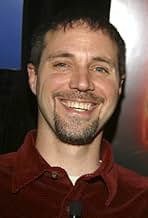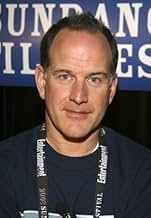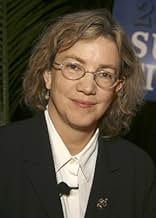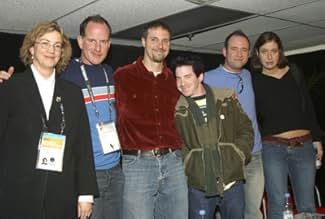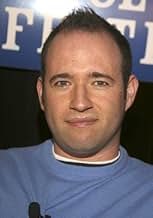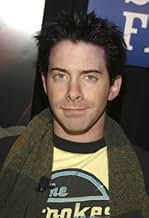Based on the true story of Michael Alig, a Club Kid party organizer whose life was sent spiraling down when he bragged on television about killing his drug dealer and roommate.Based on the true story of Michael Alig, a Club Kid party organizer whose life was sent spiraling down when he bragged on television about killing his drug dealer and roommate.Based on the true story of Michael Alig, a Club Kid party organizer whose life was sent spiraling down when he bragged on television about killing his drug dealer and roommate.
- Directors
- Writers
- Stars
- Awards
- 4 nominations total
John Henry Summerour
- Rodney
- (as John Summerour)
- Directors
- Writers
- All cast & crew
- Production, box office & more at IMDbPro
Featured reviews
The material here (covered in a similarly named documentary) is fascinating. The 90s New York club kid scene was a distinctive period with many crazy sights and scenes. Unfortunately, this film is poorly made on just about every level.
Most of the acting is not just bad, but some of the worst you'll ever see in a mainstream film. This is exacerbated by poor directing. The dramatic scenes don't feel dramatic (I yawned as one character nearly died). The costumes are very good, about on par with the actual club kids. So the film looks good at least.
Another issue: they changed so much for this movie from the actual story! If you research the actual murder and such after watching this you'll just be confused as to why they made all those arbitrary changes. I certainly wasn't to make a great film. Many people like this film, but I suspect deep down they want to live in the 90s club kid scene, and aren't objectively judging the film for its merits.
Most of the acting is not just bad, but some of the worst you'll ever see in a mainstream film. This is exacerbated by poor directing. The dramatic scenes don't feel dramatic (I yawned as one character nearly died). The costumes are very good, about on par with the actual club kids. So the film looks good at least.
Another issue: they changed so much for this movie from the actual story! If you research the actual murder and such after watching this you'll just be confused as to why they made all those arbitrary changes. I certainly wasn't to make a great film. Many people like this film, but I suspect deep down they want to live in the 90s club kid scene, and aren't objectively judging the film for its merits.
The movie's lines are interesting and the film is never dull, but it doesn't have much verisimilitude; you don't know where or when anything is happening. There are no characters other than the club kids and [the Limelight boss] Gatien, except for an occasional bemused "drearie," and there is very little sense of the time and what else is going on in New York (AIDS, ACT UP, gay activism, erotic clubs, Ed Koch, OutWeek, Republicans in the White House, Musto at the Voice, coked-out Wall Streeters).
The real Alig has a very subtle, slightly sardonic, dry and understated personality, which is what makes his flights into fantasy and lunacy so interesting. I had a cable program ("The Closet Case Show") on Manhattan Public Access from '84 to '94, so I had occasion to tape a lot of Alig's activities, including parties at Tunnel and Limelight, and his infamous Burger King [Times Square] Outlaw Party (restaurant name changed in the movie). In 1989, after getting serious coverage in The New York Times, Michael and Keoki appeared for a half-hour interview on my show. I gave a tape of this show to Mac so that he could study the subtle ways in which Michael spoke and gestured. Apparently, Mac felt that Alig's dry wit was less interesting than a more theatrical flamboyant queeniness would be, so Mr. Culkin degrades the movie by making Alig an evil faggot, overplaying the character, I guess, so that everybody would be sure that the once-married Mac was only "acting" and by no means gay himself. [Mac, as Michael A. taught everyone, and as Michael J. no doubt taught you, there is no such thing as "gay" or "straight," only sexual, with the unfortunate majority being repressed away from normal bisexuality until temporarily liberated by mood drugs.]
A more secure Mac would have played a more real Michael, and that would have helped the film immeasurably. Alig, as I told Mssrs. Bailey and Barbato, is a true tragic hero. He contributed in a positive way to the Age of Aquarius, but he was brought down in the end by excessive pride and the faulty belief that he was, as a super celeb, invulnerable to the world's evils. Aeschylus could have written the screen play.
That said, the costumes will get an Oscar nod, and probably a win, which should be shared by all the kids who created and sported the originals.
The real Alig has a very subtle, slightly sardonic, dry and understated personality, which is what makes his flights into fantasy and lunacy so interesting. I had a cable program ("The Closet Case Show") on Manhattan Public Access from '84 to '94, so I had occasion to tape a lot of Alig's activities, including parties at Tunnel and Limelight, and his infamous Burger King [Times Square] Outlaw Party (restaurant name changed in the movie). In 1989, after getting serious coverage in The New York Times, Michael and Keoki appeared for a half-hour interview on my show. I gave a tape of this show to Mac so that he could study the subtle ways in which Michael spoke and gestured. Apparently, Mac felt that Alig's dry wit was less interesting than a more theatrical flamboyant queeniness would be, so Mr. Culkin degrades the movie by making Alig an evil faggot, overplaying the character, I guess, so that everybody would be sure that the once-married Mac was only "acting" and by no means gay himself. [Mac, as Michael A. taught everyone, and as Michael J. no doubt taught you, there is no such thing as "gay" or "straight," only sexual, with the unfortunate majority being repressed away from normal bisexuality until temporarily liberated by mood drugs.]
A more secure Mac would have played a more real Michael, and that would have helped the film immeasurably. Alig, as I told Mssrs. Bailey and Barbato, is a true tragic hero. He contributed in a positive way to the Age of Aquarius, but he was brought down in the end by excessive pride and the faulty belief that he was, as a super celeb, invulnerable to the world's evils. Aeschylus could have written the screen play.
That said, the costumes will get an Oscar nod, and probably a win, which should be shared by all the kids who created and sported the originals.
I often wondered why U.S. American movies involving young people who are into drugs are either pathetic (f.e. Drugstore Cowboy) or even downright ridiculous in their conservative portrayal of the dangers of drug use (f.e. Traffic, The Movie). Party Monster is very different. It's easy to see that the people who made this movie really informed themselves about what they tried to show. By doing this they achieved one of the best movies about adolescence i've seen in a long time. It's has a very sad and tender tone and though some scenes seem a little bit too stagy, the performances of the two leading actors are pure magic. It's pure joy just to watch them and as you got to see a lot of them there is plenty of fun. Nevertheless the movie leaves you with a very intense and ambivalent feeling towards it's characters who were indeed something very special. I even dreamed about this picture after seeing it! Thanks for the strange dream!
'I'm the lowest kind of celebrity, a playwright's wife,' Celeste Holm tells Anne Baxter in All About Eve. Fifty-plus years later, she might still make the snapshot page in Vanity Fair (once), but new kinds of celebrity have clambered up to push her further down the pecking order. There are the Elvis impersonators and celebrity look-alikes. There are the trash-talking competitors on the reality shows. And there are the Club Kids, urban counterparts to the beach bums of a generation or two ago who sought nothing more out of life than an Endless Summer. What the Club Kids want is an Endless Party, where they can flame out in a drug-enhanced limelight.
The Limelight was a fixture among New York City's young downtown hedonists in the last decades of the last century. It's the center of a very small universe for James St. James (Seth Green), a budding queen from across the Hudson who, equipped with little else than a trust fund and received notions of imperious glamor, sets out to be the social arbiter of the club scene. His misfortune (and ultimately opportunity) is meeting up with hick Michael Alig (Macaulay Culkin), just off the Big Dog from one of the square states, who will prove to be St. James' very own Eve Harrington.
Imagine Bob Hope and Bing Crosby gone gay, their bitchy dynamics holding these buddies together as they prance and stumble down the Rave Road. They live in cold-water walk-ups, spending what money they have on costumes and drugs (when they can't cadge them). As a living, they set themselves up as promoters and taste-makers for struggling entrepreneurs like Dylan McDermott, whose Limelight is barely breaking even. They dream up ever more outrageous parties to lure other kids from the bridges and tunnels and tenements once occupied by immigrants but now serving as digs for druggies and rodents. (Marilyn Manson as stoned drag queen Christina serves as 'driver' for one of the events, trying to maneuver a big rig in platform heels.) Along the way there are Alig's discarded or disengaged boyfriends (Wilmer Valderrama) and girlfriends (Chloe Sevigny), sexual preference always taking a back seat first to Ecstasy and K, then to crackpipes and snorted heroin.
Party Monster derives from St. James' memoir Disco Bloodbath as a result of his plunge into addiction, Alig ends up incarcerated for the murder of his dealer Angel (Wilson Cruz). And as St. James, Green delivers a pitch-perfect performance, blackly funny yet with intimations of the shallow life he knows he leads. It's Culkin's misfortune to have his co-star so expertly steal the movie, but, with his sullen, pouty mouth, his child-star successes well behind him yet not quite filled out enough for adult roles, he's plausible as a callow social-climber who's nothing but surfaces and attitude anyway. (And as his good-time-gal-pal mom, Diana Scarwid is, as always, memorable). Party Monster maintains a deft balance between its faintly horrifying humor and its somber notes. It's a story about kids old beyond their years who, as they proudly proclaim, are utterly superficial, but still not (quite) the 'monsters' they pretend to be. Party Monster a much more interesting and accomplished piece of work is the movie that '54" should have been, and maybe even thought it was.
The Limelight was a fixture among New York City's young downtown hedonists in the last decades of the last century. It's the center of a very small universe for James St. James (Seth Green), a budding queen from across the Hudson who, equipped with little else than a trust fund and received notions of imperious glamor, sets out to be the social arbiter of the club scene. His misfortune (and ultimately opportunity) is meeting up with hick Michael Alig (Macaulay Culkin), just off the Big Dog from one of the square states, who will prove to be St. James' very own Eve Harrington.
Imagine Bob Hope and Bing Crosby gone gay, their bitchy dynamics holding these buddies together as they prance and stumble down the Rave Road. They live in cold-water walk-ups, spending what money they have on costumes and drugs (when they can't cadge them). As a living, they set themselves up as promoters and taste-makers for struggling entrepreneurs like Dylan McDermott, whose Limelight is barely breaking even. They dream up ever more outrageous parties to lure other kids from the bridges and tunnels and tenements once occupied by immigrants but now serving as digs for druggies and rodents. (Marilyn Manson as stoned drag queen Christina serves as 'driver' for one of the events, trying to maneuver a big rig in platform heels.) Along the way there are Alig's discarded or disengaged boyfriends (Wilmer Valderrama) and girlfriends (Chloe Sevigny), sexual preference always taking a back seat first to Ecstasy and K, then to crackpipes and snorted heroin.
Party Monster derives from St. James' memoir Disco Bloodbath as a result of his plunge into addiction, Alig ends up incarcerated for the murder of his dealer Angel (Wilson Cruz). And as St. James, Green delivers a pitch-perfect performance, blackly funny yet with intimations of the shallow life he knows he leads. It's Culkin's misfortune to have his co-star so expertly steal the movie, but, with his sullen, pouty mouth, his child-star successes well behind him yet not quite filled out enough for adult roles, he's plausible as a callow social-climber who's nothing but surfaces and attitude anyway. (And as his good-time-gal-pal mom, Diana Scarwid is, as always, memorable). Party Monster maintains a deft balance between its faintly horrifying humor and its somber notes. It's a story about kids old beyond their years who, as they proudly proclaim, are utterly superficial, but still not (quite) the 'monsters' they pretend to be. Party Monster a much more interesting and accomplished piece of work is the movie that '54" should have been, and maybe even thought it was.
Party Monster is based on the true story of 80s club kid and promoter, Michael Alig, infamous for his bizarre New York parties and, later, for the brutal murder of a drug dealer.
It's adapted from Alig's friend James St James' book Disco Bloodbath by filmmakers Fenton Bailey and Randy Barbato, whose earlier documentary about Alig actually inspired St James to write the book. After a nine-year absence, Macauley Culkin returns to film as cherubic bisexual Alig, who persuades James St James (a camp Seth Green) to teach him the art of infamy.
Famous for doing nothing long before reality TV, Alig becomes a manufacturer of celebrity and a promoter, serving up some wild parties, including a Halloween bloodbath, truck rave and kinky hospital party. The costumes, by Richie Rich and Michael Wilkinson, are spectacular and capture the excesses of the era. These kids affix fake spiders and cobwebs to their faces, wrap themselves in blood-soaked bandages,wear full body costumes and never look less than fabulous.
Considering the low budget and appalling production values, the high profile supporting cast is a surprise. Dylan McDermot plays Galien, club owner and Alig's mentor, with Mia Kirshner as his wife, Chloe Sevigny as Alig's girlfriend, plus Natasha Lyonne, Marilyn Manson and John Stamos. Wilson Cruz is enigmatic as wannabe and drug dealer Angel, and Wilmer Valderra is suitably objectified as Alig's beloved beefcake, DJ Keoki.
Party Monster suffers from uneven performances and poor direction but despite this, it's fascinating. It captures the disposability of party drug culture convincingly and will most likely become a cult classic. ***/***** stars.
It's adapted from Alig's friend James St James' book Disco Bloodbath by filmmakers Fenton Bailey and Randy Barbato, whose earlier documentary about Alig actually inspired St James to write the book. After a nine-year absence, Macauley Culkin returns to film as cherubic bisexual Alig, who persuades James St James (a camp Seth Green) to teach him the art of infamy.
Famous for doing nothing long before reality TV, Alig becomes a manufacturer of celebrity and a promoter, serving up some wild parties, including a Halloween bloodbath, truck rave and kinky hospital party. The costumes, by Richie Rich and Michael Wilkinson, are spectacular and capture the excesses of the era. These kids affix fake spiders and cobwebs to their faces, wrap themselves in blood-soaked bandages,wear full body costumes and never look less than fabulous.
Considering the low budget and appalling production values, the high profile supporting cast is a surprise. Dylan McDermot plays Galien, club owner and Alig's mentor, with Mia Kirshner as his wife, Chloe Sevigny as Alig's girlfriend, plus Natasha Lyonne, Marilyn Manson and John Stamos. Wilson Cruz is enigmatic as wannabe and drug dealer Angel, and Wilmer Valderra is suitably objectified as Alig's beloved beefcake, DJ Keoki.
Party Monster suffers from uneven performances and poor direction but despite this, it's fascinating. It captures the disposability of party drug culture convincingly and will most likely become a cult classic. ***/***** stars.
Did you know
- TriviaMuch of the drug use in the movie was toned down from Michael Alig and James St. James's actual habits for fear it would seem unbelievable.
- GoofsMichael Alig was arrested while in the company of his male lover, not his female lover. Gitsie was a secretary, not a girlfriend. Alig has never been romantically interested in any woman.
- ConnectionsFeatured in 20/20: Party Monster/Party Monster and Murderer (2003)
- SoundtracksTake Me to the Club
Written by Bruno Coviello
Performed by Mannequin
Courtesy of Peace Bisquit
- How long is Party Monster?Powered by Alexa
Details
Box office
- Budget
- $5,000,000 (estimated)
- Gross US & Canada
- $742,898
- Opening weekend US & Canada
- $15,163
- Aug 31, 2003
- Gross worldwide
- $782,606
Contribute to this page
Suggest an edit or add missing content




